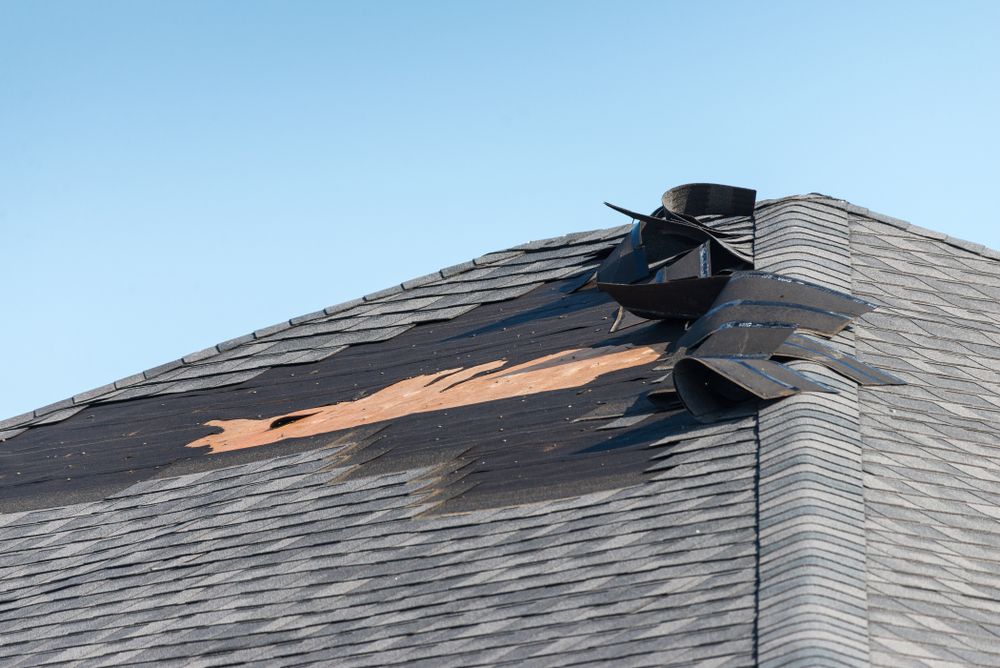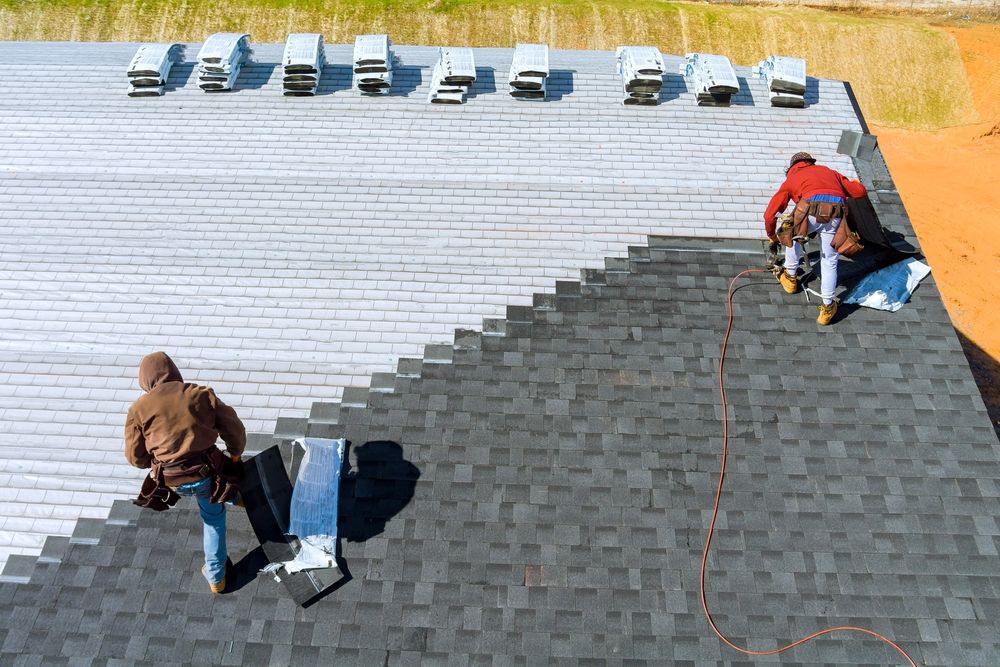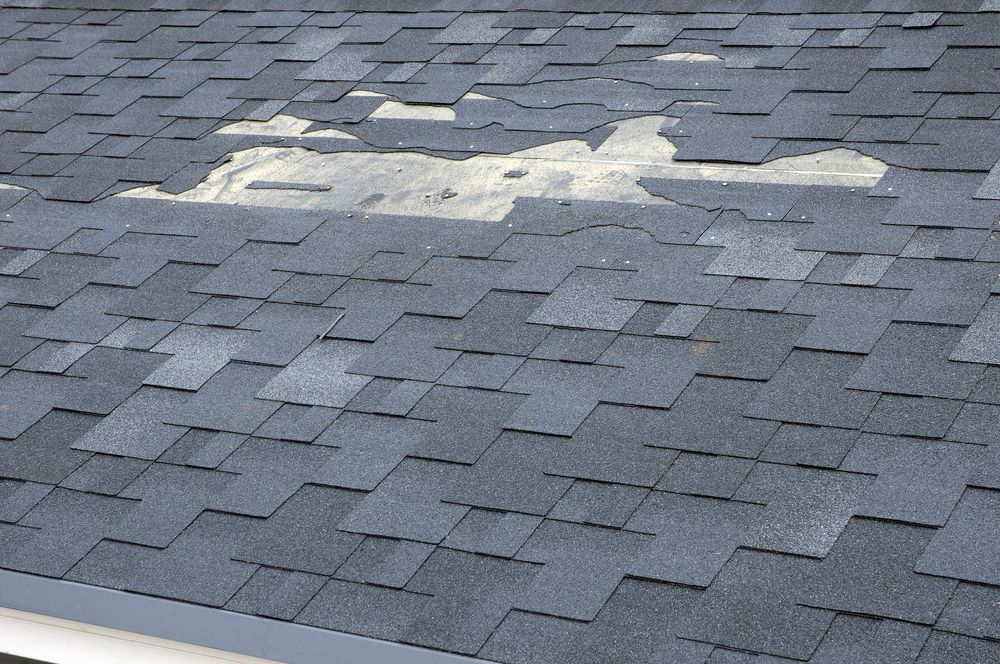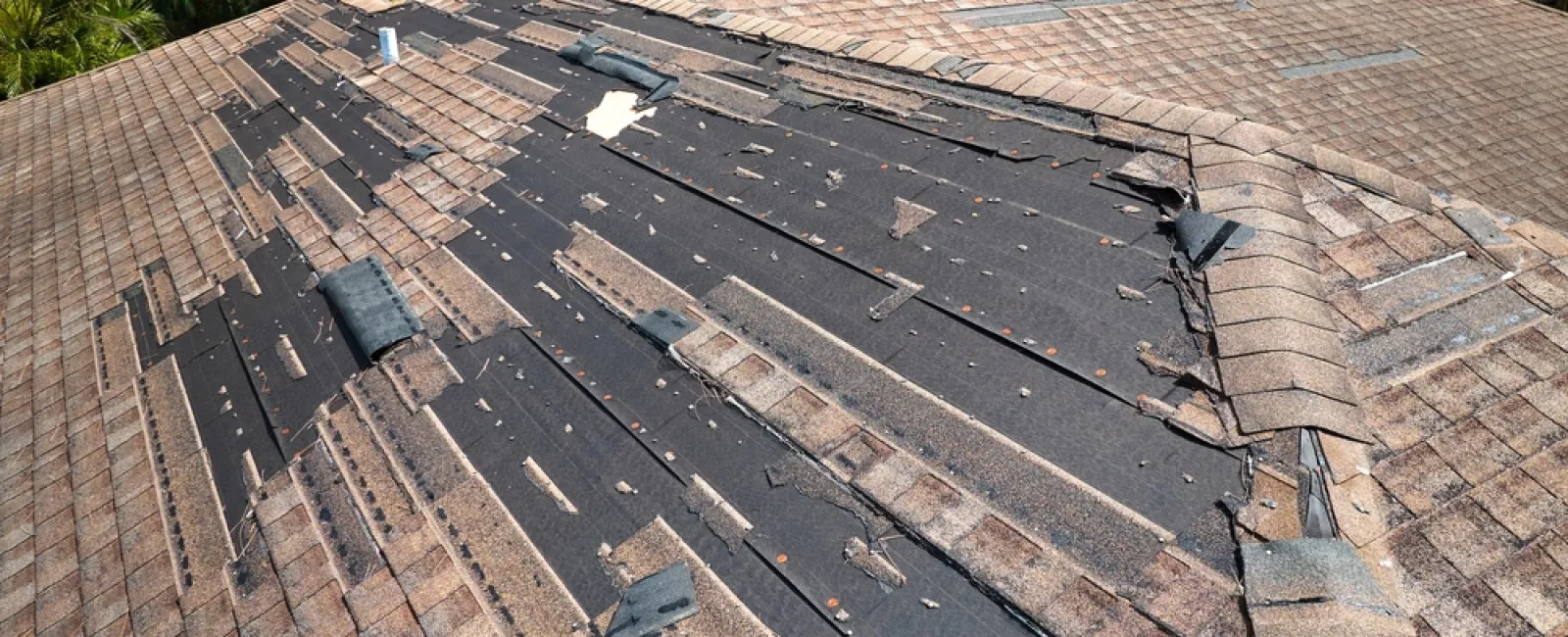The most common reasons homeowners need roof replacements are because of old age or severe weather. This leaves many homeowners wondering how to get insurance to pay for roof replacement. In cases like straight-line winds (damaging winds) during heavy thunderstorms, hailstorms, snowstorms, or tornadoes, your homeowners insurance company will most likely cover your roof replacement.
But in cases where damage was not caused by severe weather or insurance is not available, financing offers another way to pay for a much-needed roof replacement.
If your roof sustains any kind of damage, you should contact an experienced roof replacement contractor to help determine what caused the damage and whether it can be covered by insurance.
Read on to understand when a roof replacement may be covered by your insurance, how to get insurance to pay for roof replacement, and when financing may be a better option.
Schedule Your Free Roofing Inspection Today!
Understanding Your Insurance Policy Coverage
Coverage Type
There are eight different types of homeowners insurance policies to choose from. The standard HO-3 policy is the most common type. HO-1 is the most basic, while HO-5 policies offer the broadest coverage of all policy types.
Open perils coverage means losses are covered unless specifically excluded, while named perils coverage means only named losses are covered. An HO-3 policy provides open perils coverage.
Perils Covered
A covered peril is an event that your insurance will cover. Examples include lightning strikes, fire, theft, vandalism, wind and hail damage, etc. When you file a claim for a covered peril, your insurance company will reimburse you for the damage minus your deductible, if applicable.
Exclusions
If your homeowners insurance policy does not cover a certain peril (event), you will not be reimbursed for that kind of damage.
It's important to know what exclusions are in your policy to determine if you need to obtain additional coverage. For example, homeowners insurance almost never covers the cost of regular home maintenance.
Deductibles
A homeowners insurance deductible is a fixed amount of money you pay out of pocket for damages to your home before your insurance pays the rest. The higher your deductible, the less you pay for your insurance premium.
Insurance vs. Financing
When you need a roof replacement, there are two ways to pay for it: filing an insurance claim or financing it yourself.

Pros & Cons
The pros of filing a roof insurance claim are that many types of roof damage can be covered, and you may only have to pay the cost of your deductible for a full roof replacement. A qualified roofing contractor can perform a roof inspection to help identify roof damage that you may not know is covered by your insurance.
At Northpoint Roofing, we perform free roof drone inspections using AI technology to find all potential damage that was caused by a covered peril, such as a fallen tree. Even lifting shingles caused by wind damage can be covered by your insurance. And, we'll provide all the information we find to your insurance so you can receive the most coverage possible.
The cons of filing an insurance claim are that the process can be lengthy and require negotiation. But the team at Northpoint Roofing is highly experienced in dealing with insurance companies, and we will support you through every step of the roof insurance claim process.
If insurance is not available for your roof replacement, you can finance it yourself. The pros of financing your roof are that the project can fit within your budget, you can choose your preferred payment method, and your project can be approved quickly. Additionally, roof damage can cause leaks, and financing a replacement is more affordable when the damage has not yet reached the structure of your home.
The con, of course, is that you are paying for your roof replacement instead of your insurance company. But, there are instances when insurance will not cover your project, and Northpoint Roofing offers flexible roof replacement financing plans for this reason.
We'll inspect your roof, provide you with a written proposal and estimate for your project, and review your financing options with you. You can choose to use cash, credit, a personal loan, or a home equity loan to finance your project. We make sure customers with any credit score get approved quickly for a predictable monthly payment plan so we can efficiently complete your project and you don't have to worry about the cost of your new roof.
What Happens If I Don't Use My Insurance Money to Fix My Roof?
If you don't use your insurance money to fix your damaged roof, you may be held responsible for any future damage that occurs as a result of the unrepaired roof.
How to Get Insurance To Pay for Roof Replacement
1. Evaluate the Damage
First, examine your property to determine if your roof damage was caused by severe weather.
Inspection Checklist
Here is a list of things to look for that indicate storm damage:
Fallen trees near your property
Leaves stripped off nearby trees or plants
Chipped exterior paint or damaged siding
Tears in window screens
Damage to HVAC equipment or fences
Chipped, cracked, or missing shingles/tiles
Discoloration on your shingles/tiles
Chips anywhere on your home's exterior
Damage to gutters
Obvious leaks
If you notice any of these damages, it's in your best interest to contact a professional roofing company for a roof inspection.
Sometimes, damage may be hard to detect, which is why Northpoint Roofing provides swaths to access areas that have experienced potentially damaging high winds and storms.
2. Contact a Licensed Roofing Contractor

Once you've identified roof storm damage, the next step is to contact a licensed and insured roofing contractor.
At Northpoint Roofing, we provide free drone roof inspections to ensure that no issue goes unnoticed. We use AI technology to take imaging and measurements of your roof, and we will send this documentation to your insurance company.
We also use Xactimate to create a cost estimate for your roof replacement project, which is the software that insurance companies prefer as the gold standard.
Documents to Collect
The imaging and documentation we provide to your insurance company will show the extent of the damage and the estimated cost to repair it, so you don't have to worry about proving that the damage occurred in the first place.
However, it's still a good idea to take photos of any property damage you notice while you go through the above inspection checklist.
3. File a Roof Insurance Claim
Once our team has documented your roof damage and provided a cost estimate, it's time to call your insurance company and file a claim.
Your insurance company will then schedule a time for one of its adjusters to come out and look at your roof. We'll meet with the adjuster on-site to make sure they have accurate documentation of your roof damage.
4. Negotiate and Receive Approval from Insurance
After we give your insurance company our estimate, there will be some back and forth before the scope of our work is approved. Upon approval, the first check will be released to start the project. If applicable, you will pay your deductible at this time.
5. Complete Roof Replacement Project
We'll schedule a start date, order materials, and complete all prep work. Then, we'll begin your roof restoration or replacement project. If we find any additional damage that wasn't in your original claim, we will submit a supplement to your insurer for approval.
How to Negotiate Roof Replacement With Insurance
Getting the Most Out of Your Insurance
Before you file an insurance claim, you should review your policy to check whether it covers a full roof replacement and find which events are covered and which are excluded. This way, you can be prepared with the proper evidence in case of a claim denial.
You should have all documentation ready, including photos and an estimate for your roof replacement, before you file your claim. When communicating with your insurance, it's important to be patient because negotiation may be required to get the coverage you feel is fair.
Lastly, you should know your options if your claim is denied and be aware that you can supplement your claim if necessary. An experienced roofing company can help you gather all the necessary evidence and support you through this process.
What Happens If Your Claim Is Denied?

If your roof insurance claim is denied, this marks the beginning of the negotiation process. If this is the case, you probably wonder how to negotiate roof replacement with insurance. However, you should know that there are legitimate reasons for claim denials. These reasons can include improper installation, inadequate attic ventilation, and waiting too long to file.
But if your claim was denied because the insurance company didn't find damage, there are a few things you can do. The first thing you should do is ask your insurance company for a second opinion from a different adjuster.
If the insurance company still denies your claim, the next step is to contact a structural engineer. A structural engineer will inspect your roof and provide more proof to your insurance that your roof needs to be replaced.
If this step fails, you'll either need to accept the denial or file a complaint with the Commissioner of Insurance in your state. Filing a complaint is usually the last course of action, and you should only do it if your roof has obvious damage and your insurance company is being unreasonable.
FAQs
Will Insurance Cover a 20-Year-Old Roof?
Yes, as long as the causes of the damage fall under what's covered by your policy.
As a rule, whether insurance will cover your roof replacement depends on your policy terms, your roof condition, the cause of the damage, and overall insurance company policies.
Does Homeowners Insurance Cover Roof Leaks?
Homeowners insurance usually covers roof leaks caused by damage from storms, hail, or fire. Again, what your insurance will cover depends on your specific insurer and policy.
Roof leaks from a lack of maintenance or normal wear and tear may not be covered.
How Can I Get a New Roof For Free?
If you're on a tight budget and need a roof replacement, you may be wondering how to get a new roof for free. Reviewing your financing options or filing an insurance claim are good places to start. If you need further assistance, you can apply for a home improvement grant from your local, state, or federal government. Examples include the Weatherization Assistance Program and the Section 504 Home Repair Program.
Get Your Roof Replacement Covered With Northpoint Roofing
If your roof has been damaged by severe weather in Tennessee or Georgia, trust Northpoint Roofing to provide the efficient roof repair or replacement services you need. In addition to providing storm damage repair, we are also experienced in working with insurance companies to get your roof replacement covered after storm damage. If insurance is not an option, we offer financing plans to ensure that you get the roof you need to protect your home and your family.
Contact us or schedule your free drone roof inspection today.

